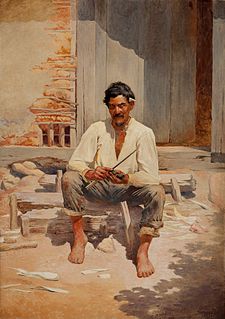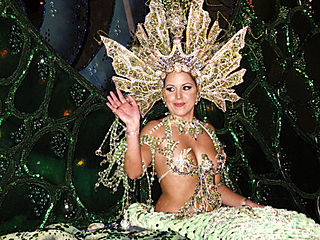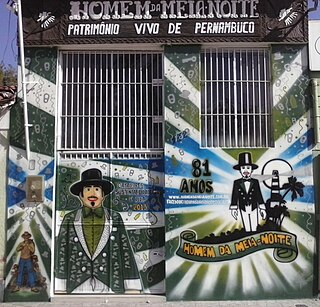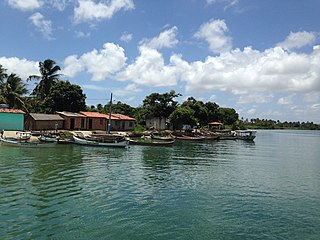 W
WRepública Independente da Banda Mole, or simply Banda Mole, is a pre-carnival block from Belo Horizonte, Brazil. The name is a pun of 'bunda mole'. It was created in the Lagoinha neighborhood in 1975. The block's main tradition is the gender swap: men parades dressed with women's clothes, and women the other way round.
 W
WA caipira is an inhabitant of rural or remote areas in the interior of the south-central part of Brazil. Their racial origins and traditional culture is similar to those of the caiçaras, who inhabit the coastal regions of the south, and the ribeirinhos, who are riverbank dwellers in the Amazon region.
 W
WCannabis in Brazil is illegal and criminalized, but possession and cultivation of personal amounts and for private use were de-penalized in 2006. Use of cannabis medications is allowed for terminally ill patients or those who have exhausted other treatment options.
 W
WThe Carnival of São Paulo is a major Brazilian Carnival. It takes place in the Anhembi Sambadrome of São Paulo on the Friday and Saturday night of the week of Carnival.
 W
WCarnival Queen, or sometimes Carnaval Queen, is the name or title given to a woman or a girl who is chosen to perform official duties during the celebration of the Carnival, a festive season which occurs immediately before Lent wherein the main events are usually held annually in February. The title is also given to a woman or a girl who has won the beauty and talent competition during the Carnival, or a woman who won a beauty and talent contest and thus become the representative during the celebration of the Carnival.
 W
WCordão da Bola Preta, shortly Bola Preta, is a carnival block that parades every carnival Saturday in Rio de Janeiro, Brazil. Bola Preta was founded in 1918. The main rhythm is marchinha, but several other rhythms are also played.
 W
WThe Efígie da República is used as a national personification, both in Brazil and in Portugal, symbolizing the Republic.
 W
WFenakiwi or Festa Nacional do Kiwi is a city celebration in the city of Farroupilha, Rio Grande do Sul, Brazil. Farroupilha is located in the Serra Gaúcha.
 W
WThe Festival de Brasília, officially Festival de Brasília do Cinema Brasileiro, is a film festival held in Brasília, Brazil. Known as Semana do Cinema Brasileiro during the first two editions, it was founded by University of Brasília's diplomat Paulo Emílio Sales Gomes in 1965 and is the oldest film festival in Brazil.
 W
WFlorianópolis Gay Carnival is a LGBT carnival located in Florianópolis, Brazil. The carnival includes the Pop Gay competition, a beauty contest for drag queens and transgender people. The Pop Gay Festival during Carnival and our pride parade, both with around 40,000 to 50,000 people.
 W
WGalo da Madrugada is a carnival block from Recife, Brazil. The block was created in 1978 by Enéias Freire. Galos parades every Saturday of carnival at São José (Recife) neighborhood. The main rhythm is the frevo, but other rhythms are also played.
 W
WAlexandre Herchcovitch is a Brazilian fashion designer. His designs have been at fashion shows in New York, Paris, London and São Paulo Fashion Weeks. Best known for avant-garde designs and eclectic prints, his trademark skulls became an icon of Brazilian youth in the 1990s.
 W
WO Homem da Meia-Noite is a carnival block in Olinda, Brazil. The block was created in 1931 by Enéias Freire. It parades on carnival Saturday midnight at Olinda's historical center, being the first block to perform. frevo is the main played rhythm, but others are also played, such as samba and marchinhas.
 W
WLesbian, gay, bisexual, and transgender (LGBT) rights are liberal in Rio de Janeiro. Same-sex marriage is legal in the state.
 W
WMicaretas are off-season celebrations similar to Brazilian Carnival. The micaretas are similar to the Bahian Carnival and very different from the samba school parades that are popular in Rio de Janeiro. The central feature of a micareta is a large truck called a "trio elétrico." The trio elétrico is wired with loudspeakers and has a band performing on the truck's trailer. The truck drives slowly along the streets or sits parked in an enclosed space and a crowd follows the trio elétrico singing, dancing, and jumping to the sound of the music. To be allowed to follow the truck, one must buy admittance to one of the several "blocos" (block). A bloco is an enterprise which obtains permission to participate in the micareta, hires the band, sells admittance, and controls access.
 W
WThe Miss Brazil 2012 was the 58th edition of the Miss Brazil pageant, was held in Fortaleza on September 29, 2012. The winner was Gabriela Markus who has represented your home country in the 2012 Miss Universe pageant. Twenty six delegates from each state and the Federal District competed for the crown. Current titleholder, Priscila Machado of Rio Grande do Sul, crowned her successor at the end of the event.
 W
WParintins Folklore Festival, or often also called Festival do Boi-Bumbá, Bumba Meu Boi, or simply Festival, is a popular annual celebration during three days in late June held in the Brazilian city of Parintins, Amazonas. It is one of the largest annual festivals in Brazil; only the Carnival festivities in Rio de Janeiro and Salvador draw more participants. The festival is recognized as a Cultural Heritage of Brazil by the National Institute of Historic and Artistic Heritage.
 W
WThe ribeirinhos are a traditional population in South America, who live near rivers. Their main activities are fishing and farming on a small scale, for their own use. They usually live in pile dwelling and travel by motor boats called voadeiras, with which they reach the nearby towns.
 W
WThe São Paulo Fashion Week is an clothing trade show held semi-annually in São Paulo. It is notable as "Latin America's pre-eminent fashion event" and it is of the emerging fashion weeks, outside the Big Four of New York, London, Paris and Milan, that have been established since the 1990s. It has been controversial in the past because of a "longstanding bias towards white models." In 2009 quotas were imposed that required that 10 percent of models to be "black or indigenous" as a way to foster equal opportunity.
 W
WA shabono is a hut used by the Yanomami, an indigenous people in extreme southern Venezuela and extreme northern Brazil.
 W
WOcimar Versolato was a Paris-based Brazilian fashion designer, who at one time worked for the house of Lanvin.
 W
WZé Pereira dos Lacaios is a carnival block from Ouro Preto, Brazil. Founded in 1867, it is the oldest carnival block in the country which is still active.